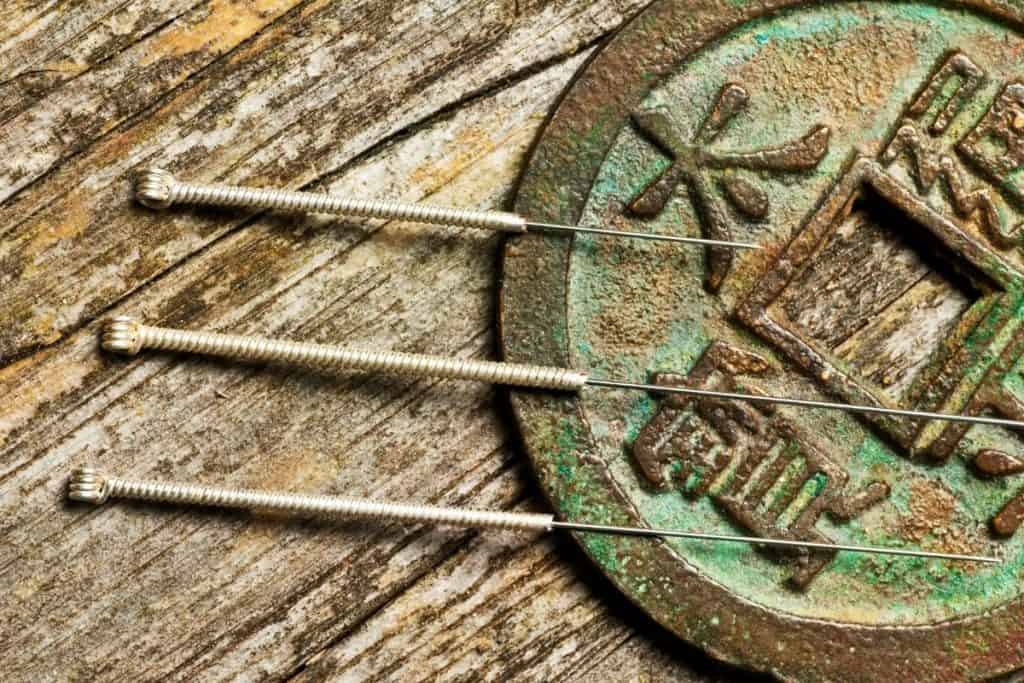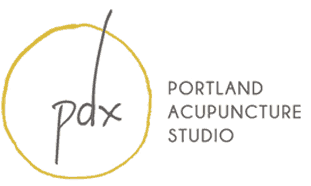
If you’ve never had acupuncture before and have a little (or big!) fear of needles, you might be worried about going to see an acupuncturist. We understand this well, but we want you to know that acupuncture needles are not like the hollow injection or hypodermic needles you may have experienced at your doctor’s office.
Acupuncture needles are solid (filiform) and much thinner than hypodermic needles.
Needles are classified by their gauge (higher gauge means thinner) and whether they’re hollow or not. Intramuscular injections (like a vaccine) use a 20 gauge hollow needle. Most acupuncturists use 34-42 gauge needles.
Our thinnest needles are 0.12 mm in diameter, about the size of a human hair! For comparison, a ballpoint pen tip is about 1mm in diameter, so about 9 times bigger.
The higher gauge acupuncture needles are so thin that they require a special guide tube to stabilize the needle so they can be inserted – otherwise, they’d just bend and not go into the skin.
Fun fact: The needle tube was invented by a Japanese practitioner in the 1600s when he discovered that a bamboo segment could stabilize a needle.
Acupuncture needles are usually stainless steel, but they can also be made out of silver or gold, and some have a silicone covering. The needles themselves have a metal shaft, which is the part that is inserted, along with a handle that can be made of either wrapped stainless steel or plastic.
All acupuncture needles have been sterilized before they are used. At one point, acupuncture needles were re-sterilized, sharpened, and re-used, much like surgical instruments. But now all acupuncturists use single-use disposable needles that come in a sterile package and are never re-used.
Acupuncture has a long history and has been practiced for at least 3000 years. One of the ancient texts describes nine different needle types. The typical acupuncture needles we use today are only one of the nine types of needles used in ancient times.
Some of the other needles were intended to stimulate acupuncture points and channels on the surface of the body (non-insertive needles). One of the nine needle types is a lancet, used to bleed acupuncture points or drain infected wounds, which can be very effective for infections.
There are several specialty needling techniques. One of the more common modern techniques is electro-acupuncture, which is passing a slight current through the needles. It’s also common to burn an herb on the needle handle while it’s inserted in the body, called needle-head moxibustion.
Patients report a variety of sensations from needle insertions: Often they don’t feel the needle go in at all. Others report mild sensations like a brief sting, mild dull ache, tingling, a slight electrical zing. With needle stimulation, patients might say they feel a cool or warm sensation, or they may feel a sensation that travels in a line (usually along the channel the needle is inserted into).
The Power of the Acupuncture Needle
No matter what sensations the patient feels from the needles, the idea is to alleviate symptoms like headaches, indigestion, insomnia, infertility, nausea, hypertension, stress, and all kinds of pain. As unfamiliar as acupuncture might be at first to our Western minds, it is clear that it is an effective treatment for many conditions.
If you’re curious to learn more about how acupuncture might help you, please contact us.
Established patients can schedule online, patients who haven’t seen us at Kwan Yin Healing Center call (503) 701-8766, or email us to schedule your appointment.




